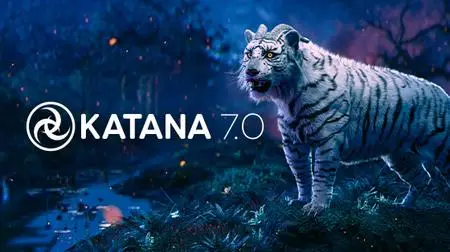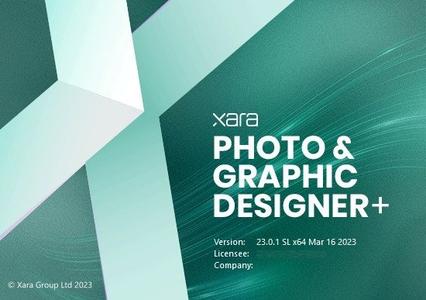Solid Angle Houdini to Arnold 6.3.3.0 (x64)

Free Download Solid Angle Houdini to Arnold 6.3.3.0 | 8.6 Gb
TheSolid AngleTeam is pleased to announce the availability ofArnold (or HtoA) 6.3.3.0 for Houdini. This release uses Arnold 7.3.3.0 and is a minor feature release bringing a new OpenPBR surface shader, improvements to volume rendering, OIDN support for Apple Metal and AMD GPUs, and many other improvements as well as multiple bug fixes
Owner:Solid Angle
Product Name:Arnold for Houdini (HtoA)
Version:6.3.3.0
Supported Architectures:x64
Website Home Page :www.arnoldrenderer.com
Languages Supported:english
System Requirements:Windows, Linux & macOs *
Size:8.6 Gb
.
Enhancements
–OpenPBR Surface:A new openpbr_surface shader implements the OpenPBR specification. OpenPBR Surface is an evolution of Standard Surface, developed in collaboration with Adobe and the Academy Software Foundation. It introduces many improvements, in particular a better sheen/fuzz model and improved metal reflectivity parameterization. (ARNOLD-13385)


Close
Convert Standard Surface shaders to OpenPBR Surfaces using the new conversion scripts
–Classic Viewport Improvements:Viewport shader preview for OpenPBR Surface and Standard Surface in classic HtoA (HTOA-1488, HTOA-1511)

Close
(Note: Shader parameters must be promoted for this to work in the viewport)
(Shader Developers: Custom shaders can now use the new houdini.ogl_tag metadata to automatically tag VOP parameters with OpenGL tags):
[attr diffuse]
houdini.ogl_tag STRING "ogl_diff"
–Solaris Viewport Improvements:Shader parameters and textures are now more accurately reflected in the viewport (HTOA-598, HTOA-2266)

Close
–Scattering diffusion in volumes:Two new parameters in standard_volume improve how light is scattered in volumes. Using those parameters can help achieve high-scattering looks with fewer volume bounces and without adding energy. (ARNOLD-14482)
. scatter_diffusion accelerates scattering in volumes.
. scatter_diffusion_roughness accelerates scattering further on anisotropic volumes and can help achieve realistic looking clouds with fewer bounces.
. gain and bias curves can further tweak the effect of both parameters

Close
–Stochastic volume interpolation:The tricubic interpolation mode of AiVolumeSampleXXX() calls, such as those used by the standard_volume shader, now uses a stochastic method of interpolation that greatly reduces the amount of voxel data read in each sample call. In testing, we’ve seen speed ups of as much as 1.7x in certain scenes. Note that this technique does not always produce a perfectly matching image as a result, and can be toggled via the stochastic_volume_interpolation render option (default is on). (ARNOLD-3856)
–Improved quality with Intel Open Image Denoise 2.3.0:The updated Intel Denoiser improves denoising quality and can produce sharper results with less artifacts on scenes with specular reflections and transmission. For more information about changes in this version, see the OIDN release notes (ARNOLD-15059).


Close
–OIDN support for Apple Metal and AMD GPU:The Intel OIDN denoiser now supports on macOS all Apple Metal GPUs (M1 and newer) and on Windows AMD GPUs using RDNA2 (Navi 21 only) and RDNA3 (Navi 3x) architectures. This allows for significantly faster denoising: on an M1 Max laptop we see 5-8x faster denoising. (ARNOLD-14855, ARNOLD-14856)
–GPU Many-lights support for light linking:Arnold GPU now uses Global Light Sampling for group of lights linked to a shape. This can improve rendering performance for scenes with light linking. For example, the ALab scene now renders twice as fast when you use Global Light Sampling. (ARNOLD-15050)
–GPU improved time to first pixel in scenes with many nodes:Reduced time to first pixel with Arnold GPU and scenes with many nodes. For example, we have seen a 18% improvement in time to first pixel on a simple scene with 1,000,000 instances. (ARNOLD-13652)
–Motion vector AOV on GPU:The motionvector AOV is now supported when rendering on GPU. (ARNOLD-11046)
–Ramp Shaders:Improved UI and new linkable inputs (HTOA-2629)

Close
–3D ramp modes:Ramp shaders have three new modes: 3d_linear, 3d_spherical, and 3d_cylindrical. These modes calculate the ramp input from the distance between the shading point and a user-defined reference point or line. (ARNOLD-15051, ARNOLD-15196)
–Ramp offset:Ramp shaders can now offset the input value, which allows you to add noise to the ramp. (ARNOLD-15052, ARNOLD-15197)
worley noise (3d_spherical) cell_noise (u) alligator noise (v)
–Arnold ROP– Now saves deform_keys to universe options (HTOA-2620)
AtNode* options = AiUniverseGetOptions(universe);
const int deform_keys = AiNodeGetInt(options, ‘deform_keys’);

Close
–Improved AOV memory usage in non-progressive renders:Non-progressive, adaptive renders with the box filter now use less memory. Memory usage is also reduced in non-adaptive renders when using the following filters gaussian_filter, triangle_filter, sinc_filter, catrom_filter, mitnet_filter, blackman_harris_filter. For example, in a 1080p render using adaptive with AA_samples_max 50 and 6 AOVs, the memory used by AOVs was reduced from 14GB to 730MB (-96%). Note also that AOV memory usage now remains constant as AA_samples_max increases, unlike previous releases where the memory would increase quadratically. (ARNOLD-10160)
–Improved efficiency of the Alembic procedural:The Alembic procedural now reads data in parallel, which optimizes initialization times of heavy Alembic files with many objects. We observed startup times going from 15 minutes to 4 seconds on a large production scene. (ARNOLD-14796)
–Indirect diffuse and indirect specular parameters are now linkable in the standard_surface and openpbr_surface shaders:The indirect_diffuse and indirect_specular of standard_surface and openpbr_surface shaders now support linking of shaders. This should allow better optimization in scenarios where no indirect lighting is needed. (ARNOLD-14204)
–Triplanar Nref user param:Triplanar shader now accepts an Nref user parameter, to allow specifying reference normals when in Pref mode. (ARNOLD-15063)
–AOV names used for OpenImageIO subimages:Multi-part files previously used default subimage naming for layers/subimages. Arnold now uses the names of AOV outputs for the corresponding subimage. (ARNOLD-15053)
–Triangle tessellation memory usage statistics grouped under polymesh memory usage:Arnold logs now list triangle tessellation and polymesh memory usage together in the peak CPU memory used and peak GPU memory consumed. (ARNOLD-15194)
–ZMQ– Upgraded to ZMQ 4.3.5 (HTOA-2617)
–OSL VOP– Added a manual Compile button (HTOA-1733)

Close
– OSL VOP – Node inputs and outputs are updated on scene load, even in manual cook mode (HTOA-1733)
USD Enhancements
–Reduced memory usage when using Husk– Arnold now uses less memory for geometry when rendering a single frame through Husk. usd#1918
–Skinning on USD curves and points– Binding skeleton on BasisCurves and points will now work with the procedural. usd#1814
–User data on lights– Primvars on lights are now imported as user data on Arnold light nodes. usd#1939
–Improved quad and mesh light exports– Mesh lights are now exported as a Mesh with light attributes instead of a GeometryLight. usd#1955
–Renders abort on license fail– The render delegate used by Husk aborts a render if a license isn’t found and the environment variable ARNOLD_FORCE_ABORT_ON_LICENSE_FAIL is set to 1. usd#1950

Close
Incompatible Changes
–Triangle tessellation memory usage statistics grouped under polymesh memory usage:Arnold memory usage statistics no longer groups triangle tesselation memory usage under the triangle tessellation section. You can now find the memory usage under polymesh memory usage in peak CPU memory used or peak GPU memory consumed. (ARNOLD-15194)
–heatmap_filter deprecated:With the improved heatmap workflow via imagers, the heatmap_filter is now deprecated and may be removed in the future. (ARNOLD-15123)
–No forced scene update after options modifications:Instead of forcing a full scene update when the options node is modified, a node that uses data from the options node in its node_update function should declare this dependency with the new AiNodeAddDependency API. (ARNOLD-14973)
–force_update metadata deprecated:We are deprecating this functionality, which might be removed completely on a future release. Instead of using force_update, nodes are expected to declare dependencies on other nodes using the new AiNodeAddDependency API, to optimize scene updates (ARNOLD-14901)
Bug Fixes
– HTOA-2619 – Changed Arnold Light contribution max limit to a soft limit
– HTOA-2624 – The Arnold ROP default denoiser imager network is no longer hidden
– HTOA-2647 – Added ass.gz to file pattern in Arnold Procedural node
– ARNOLD-14779 – AtProfiledLockable not compiling on Windows in newer MSVC due to Mutex::native_handle_type
– ARNOLD-15041 – Arnold does not run on Linux distros with glibc 2.39 (RHEL 9.4)
– ARNOLD-15060 – Arnold should not catch C++ exceptions it did not generate
– ARNOLD-15087 – uv_projection shader uses corrupt UVs for evaluating its default_color shader
– ARNOLD-15121 – [GPU] crash when CUDA error has no message
– ARNOLD-15122 – Crash destroying a light that is part of a light group
– ARNOLD-15136 – Random hang when parallel initializing scene
– ARNOLD-15269 – Output sheared in negative AA passes when using OptiX denoiser with odd-numbered render resolution sizes
– ARNOLD-15277 – [GPU] crash when using shadow groups
– ARNOLD-15025 – [GPU] Outdated GPU support metadata on min_pixel_width parameter
– usd#1861 – Fix BasisCurves disappearing on interactive updates
– usd#1927 – Fix procedural updates during interactive changes of non-leaf primitives
– usd#1661 – In the procedural the subdivision meshes will use the normals generated by the subdivision algorithm instead of the normal primvar.
– usd#1919 – Fix rendering multiple frames with husk.
– usd#1952 – Don’t write camera aperture parameters if they’re already set
– usd#1902 – Fix sporadic invalid Cache ID error
Arnold from Autodeskis an advanced unbiased Monte Carlo ray tracing renderer. It uses the power of your CPU to calculate illumination in the scenes by default. You can, however, switch between CPU and GPU rendering depending on your needs. Arnold is famous for its staggering hyperrealistic renders, which is why it’s perfect for creating cinematic shots. When you have a massive amount of fine detail in your scene, when you’re dealing with intricate textures, or when your lighting setup is complex, a precise renderer like Arnold will ensure that none of your hard work goes unnoticed. Think of the stunning visuals of Blade Runner 2049, Guardians of the Galaxy, or Tim Burton’s Alice in Wonderland – all three were rendered using Arnold.
Arnold for Houdiniprovides a bridge to the Arnold renderer from within the standard Houdini interface. Having been in beta for several months, the plugin has already been used in production by many studios, including Prime Focus World for Hercules and Vampire Academy, Milk VFX for the Sherlock and Doctor Who TV series, and Framestore NY for the Captain Morgan commercials.
render engines in houdini – arnold intro
Solid Angleis leading provider of rendering software for animation and visual effects. The Arnold team believe that accurately and efficiently computing light transport in CG scenes is the best way to create stunning imagery for films and TV. Developers strive to provide clients with the best rendering tools to efficiently create realistic images. Solid Angle is a wholly owned subsidiary of Autodesk Inc, and has its offices in Madrid and London.
Autodeskhelps people imagine, design and create a better world. Everyone-from design professionals, engineers and architects to digital artists, students and hobbyists-uses Autodesk software to unlock their creativity and solve important challenges.
DONWLOAD FROM RAPIDGATOR
http://peeplink.in/8133ace58bb9
Fikper
rszf7….SETUP.part1.rar.html
rszf7….SETUP.part2.rar.html
rszf7….SETUP.part3.rar.html



